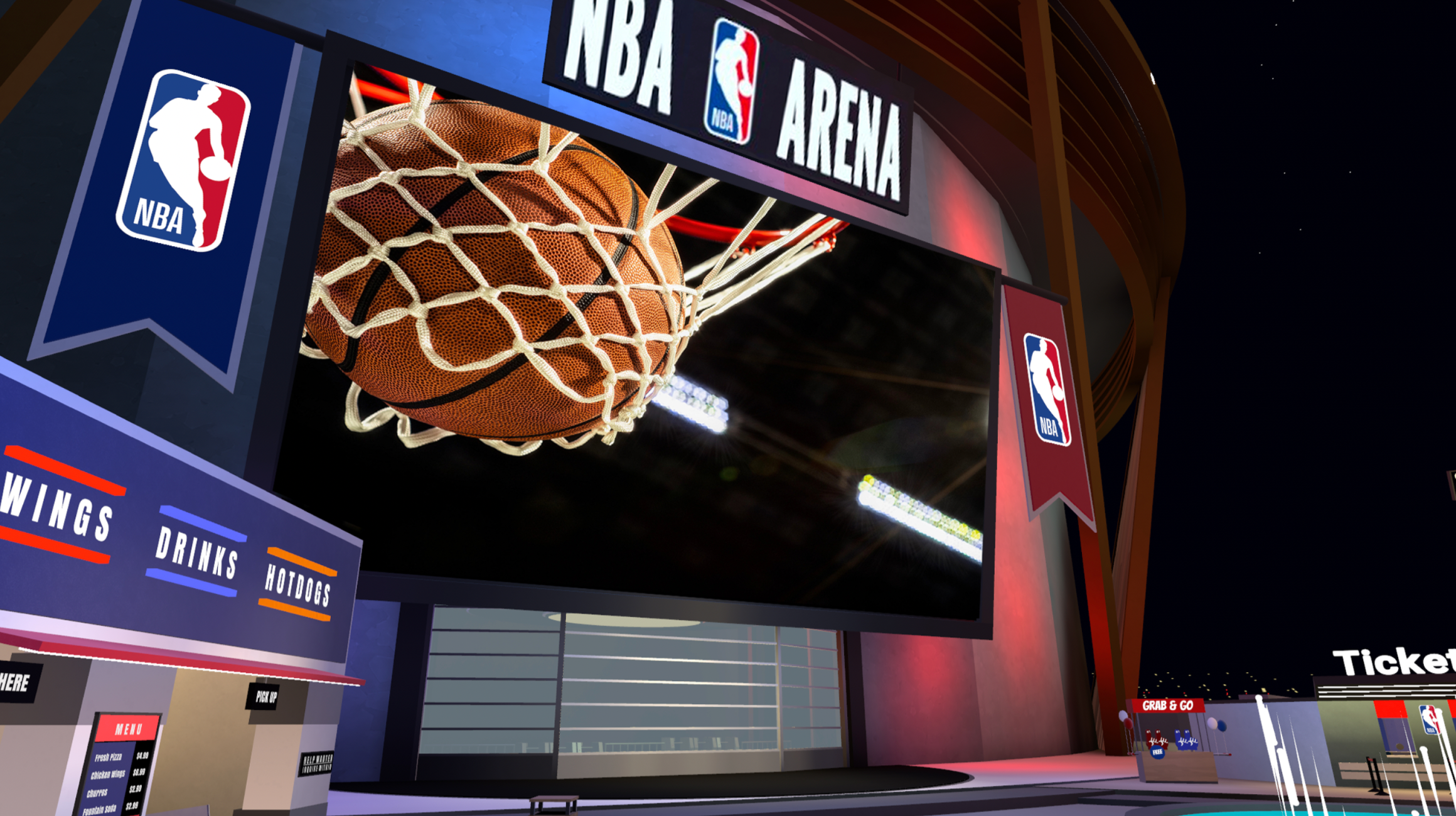SVG Sit-Down: NBA’s Teddy Kaplan on the Metaverse and the Future of Fandom
NBA Lane in Meta’s Horizon World is intended to allow fans to congregate and interact
Story Highlights
The NBA and Meta expanded their relationship around VR this week, and the deal is about more than just expanding the Metaverse: it’s about learning what NBA fans want out of this new form of engagement and also what hard-core Metaverse users want from the NBA. Teddy Kaplan, associate VP, new media partner management lead, NBA, sat down with SVG to discuss the new deal and what it means not only to the NBA but to everyone.

The NBA’s Teddy Kaplan: “The Metaverse is one of many things we are doing to make our game more appealing to fans around the world.”
Meta Horizon World is a free app that can be experienced on a Meta Quest headset. Last year, the NBA launched NBA Lane in Horizon World, offering a free-throw shootout, low-gravity dunk contest, and more. This new team adds the NBA Arena experience, featuring live NBA League Pass games in virtual reality throughout the season. You just extended your work with Meta under a new multi-year agreement. How will this new deal take things to a new level?
We’ve been broadcasting VR games on Oculus since 2017, and this deal expands that by establishing a world in the Horizon World space, which will be evergreen. Last year, around the time the playoffs started, we launched our NBA Lane in Horizon World, and it ran through the end of June. Now we’re making it evergreen and the hub for NBA fans to congregate, gather, and interact with other NBA fans and games.
From a broadcast perspective, we’re expanding our coverage schedule and expanding from 26 to 52 games in Horizon World. We are also experimenting with some new formats — 47 of those will be the League Pass 2D broadcast — but in an immersive space so fans can meet in the world and talk about it and walk around it. Five games will be traditional VR broadcast with dedicated cameras and announce teams.
What do you see as the potential around the Metaverse?
We want to bring our games and express our games in new ways and in new avenues, as we have done with volumetric capture or alternate broadcasts on our app. The Metaverse is one of many things we are doing to make our game more appealing to fans around the world.
Certainly, we’re aware and excited about the appeal of the Metaverse to younger fans who have a headset and use that as their entry into this world. That’s one of the reasons we’re experimenting and bringing regular linear games into the Metaverse. We’re interested to find out what appeals and what people want. Do they want the new angles of a dedicated VR production, or is it the interaction and ability to meet up with their friends living somewhere else and watching a game standing next to them? And then there are the interactive games and all the other elements, and those get people to stay during the 22 hours a day when there isn’t an NBA game.
But I see this as an evolution of the fan experience. If you lived in Paris and wanted to get together with fans of your favorite team, you would search to find the best bar to watch the game. This is the next step: you can meet up with like-minded fans and watch the game with people who have the same interest and love of the game.
The biggest complaint people used to have about VR was that it was anti-social when you put the headset on and were secluded from the world. Now it’s extremely social, and the reason users will want to stay in the headset is to see their friends or meet new people.

The NBA now has a permanent home in the Metaverse, designed to give NBA fans a new way to engage with the league, its broadcasts, and each other.
Do you think it’s important for other leagues and everybody to get involved with the Metaverse, so everyone gives it a collective lift?
Our fans are tech-savvy and first adopters, and we see these partnerships as a way to establish a reputation and a position in the space. Someone who has a VR headset will experience the NBA and say it’s amazing, and they will wish their other favorite leagues or brands were in the Metaverse.
What does Meta bring to the table?
They’ve been amazing through this process, and it’s truly iterative as we look to them to tell us what works in Horizon World and what doesn’t. We’re innovation partners and constantly thinking about what we can do to make the experience better for our fans. It’s one of those relationships where we are aligned and things fall into place. Their work is incredible. I clearly have a bias, but the work they have done is unparalleled.
In the NBA Lane project last year, for example, we saw that fans would be fixated watching the top 10 highlights and talking to each other. When we saw that reaction with highlights, we wanted to see what the reaction would be like with a live game.
We’re constantly trying out new formats to figure what works. I think back to the first VR experience I had, which was a preseason game in Brazil with the camera at midcourt. It was really cool, but then it felt like you were watching a tennis match, and we realized people like having a director switching cameras and telling them where to look.
So we’ve evolved every year and even every month. This is just the next step.
Tell us a bit about how the Metaverse comes together technically.
Luckily for everyone who is using it, I don’t have to be involved in actually creating the code and programming: we have smarter people who can do that. But we do have a team, and Meta has a team building out this world from soup to nuts. They’re amazingly talented, and we’re building off what the Meta team has built as we look to learn what type of games and programming is stickiest.
Have you tried some of the new headsets?
The form factors are great. I tried the Meta Plus Pro: it’s lighter, and the passthrough capabilities [allowing you to see the real world through the glasses] are great; you don’t feel like you’re going to bump into a wall. I will admit I’m not much of a gamer, so I haven’t pushed the engines on the processing power, but, to me, the biggest advantage is the form: it’s lighter on your face. And they’re only getting better.
The NBA has also done some work with Canon and volumetric capture. Is that going to merge with the Metaverse at some point?
We don’t have any official plans to integrate Meta and volumetric capture, but it’s easy to see in 10 years how those two things converge. It’s all about figuring out what that convergence should look like. Even on the Enterprise side, we’re exploring (with Meta) using headsets to train our players and refs and give them an on-court experience.
Back to the League Pass integration and watching the 2D games. Is there a virtual– sports-bar experience where you can watch multiple games at once?
Right now, it’s just one game at a time, and it’s in Horizon World. The other thing we are doing is working with Meta on their XTADIUM product, which is an app in Horizon World that will have a space where you can authenticate your League Pass subscription. It’s a different environment: in Horizon World anyone can watch the 52 games; in XTADIUM, you can authenticate and watch any of the League Pass games.
